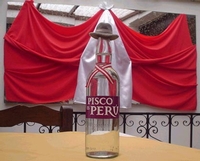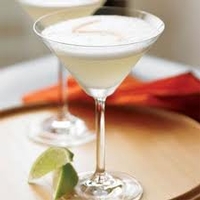As most of us know, there is a lot of fantastic wine coming out of Chile these days, but another Chilean libation not to be overlooked is Pisco. An enjoyable high octane elixir, Pisco is the subject of a long standing debate between Chile and Peru, each of which claims to be its true country of origin. Far be it for me to enter the fray (especially as I’ve never been to Peru or tasted Pisco from that country), but what I do  know is that Pisco’s roots can be traced back to 16th century Colonial rule, when the Spanish invaders brought grapes to South America. After Spain’s King Phillip II banned the production of wine in the colonies, the locals began distilling the grapes to make a sort of brandy.
know is that Pisco’s roots can be traced back to 16th century Colonial rule, when the Spanish invaders brought grapes to South America. After Spain’s King Phillip II banned the production of wine in the colonies, the locals began distilling the grapes to make a sort of brandy.
By the 17th century this brandy had become a local favorite, and was particularly popular with the sailors who transported products between the old and new worlds. These mariners are usually credited with naming the drink after the Peruvian port from which it may have been first exported. Pisco remained a favorite drink of sailors crisscrossing the ocean until its popularity was surpassed by rum, which was both smoother and less expensive.
A variety of different grapes can be used in the production of Pisco, many of them aromatic varieties from the Muscat family. Like any brandy-type liquor, Pisco may or may not be aged in oak barrels. Like all brandies, Pisco varies in quality, ranging from bland and sweet to a potion admired for its complex aromas and flavors.
Pisco had a surprising life in19th century California, where it was a favorite drink in Gold Rush country. The poet Rudyard Kipling so loved Pisco that he wrote an ode in which he described it as “compounded of the shavings of cherubs’ wings,” and compared it to “the glory of a tropical dawn, the red clouds of sunset, and the fragments of lost epics by dead masters.” (Do you think these flashy poetics may have been the result of too much Pisco?)
A cocktail called Pisco Punch was created in the 19th century at the Bank Exchange, a trendy turn-of-the-century bar in San Francisco. The Punch was wildly popular until Prohibition closed the Bank Exchange down permanently. But now Pisco is back. As a relative newcomer on  the hip cocktail scene in the US, Pisco’s popularity is growing fast (according to the Comision Nacional del Pisco of Peru, exports of Peruvian Pisco to the US rose an astounding 81% last year).
the hip cocktail scene in the US, Pisco’s popularity is growing fast (according to the Comision Nacional del Pisco of Peru, exports of Peruvian Pisco to the US rose an astounding 81% last year).
Pisco Sour, the descendent of San Francisco’s Pisco Punch, is undoubtedly the most popular cocktail in Chile and Peru. I’ve had many Chilean Pisco Sours over the years, a few of them cloyingly sweet, but the well made ones are both exhilarating and refreshing. Among my favorite versions of the beverage is the exceptional Pisco Sour served at the lovely La Mar restaurant in Santiago (and at the La Mar satellites in Lima, San Francisco, and soon Manhattan).
La Mar Pisco Sour:
3 ounces Pisco
1ounce lemon juisce
1 ounce simple syrup
1 ounce egg white
Shake over ice, strain and top with angostura bitters. Cherubs’ wings optional.
7
